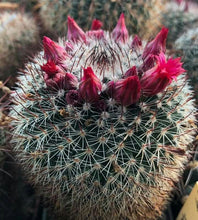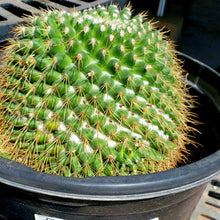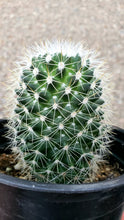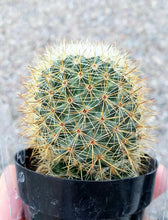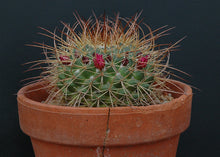
Mammillaria is one of the largest genus of Cacti in the Cactaceae family. Its native range is Mexico, but also some species are found in parts of Central & SW. U.S.A. and also parts of Colombia, Caribbean and in Venezuela. Depending on the species, they can grow either solitary or in clumps, and form a small globular or elongated shape. Flowers are funnel-shaped and vary in size and colours can vary from white to yellow, pink and red in colour. They often appear to have a darker mid-stripe on the flowers and form a ring around the stem. Fruits can follow which are generally red and elongated. Mammillaria have nipple-like tubercles. They are fairly easy to grow and may produce large quantities of seeds that germinate freely around the parent plant. They are extremely well adapted to drought and able to store water within their structure to ensure survival through dry periods. They are often grown in greenhouses, particularly in regions unsuited to their cultivation outdoors. They can be grown in the ground or in suitable containers which means that they are suitable as houseplants, being tolerant of the often dry atmosphere. Mammillaria petterssonii has woolly axils, orange yellow spines and produces attractive carmine flowers. The stems are thin and elongated and offset furiously, soon producing small clumps.
~ Bare root plant





